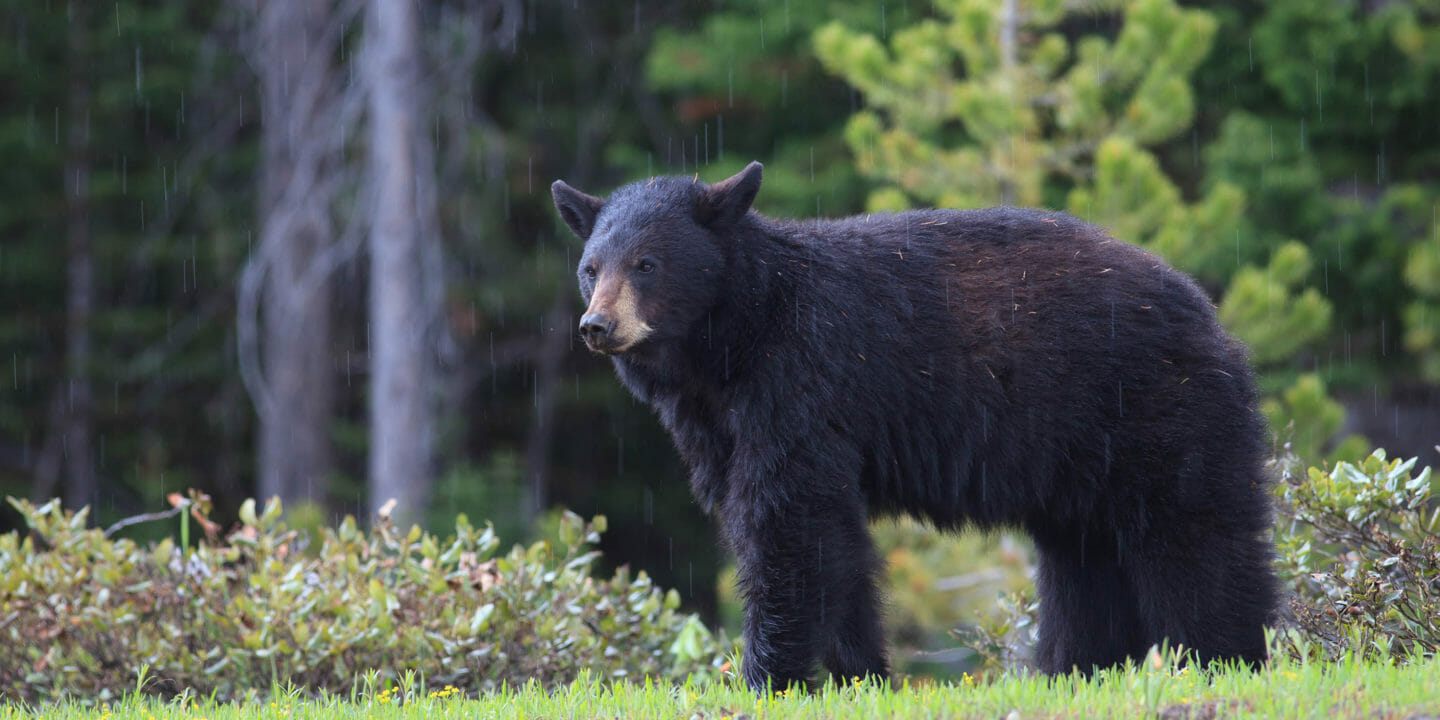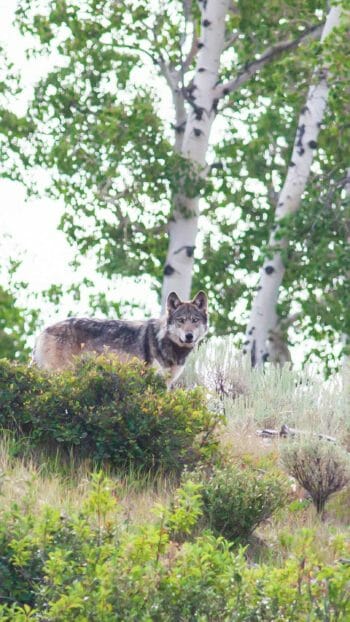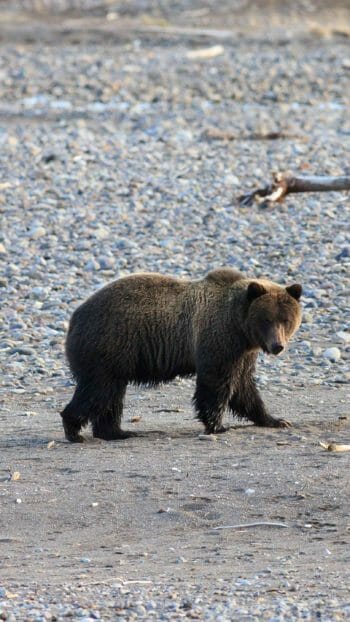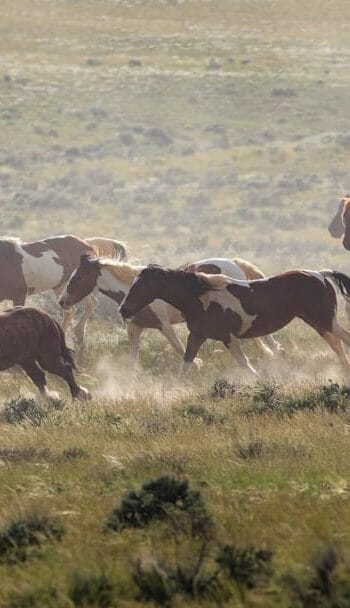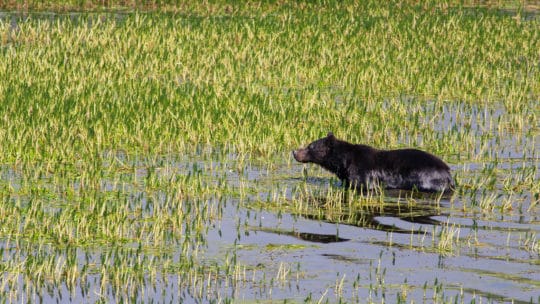
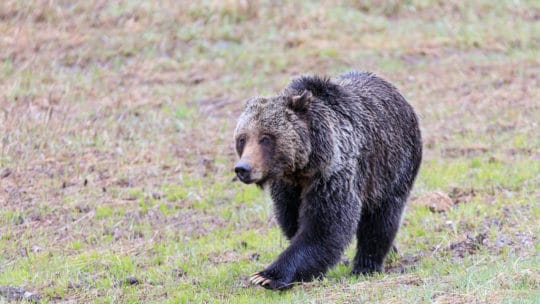
Spring Bear Sightings
Spring is undoubtedly the best season to see bears. At that time they are frequently foraging in open areas, feeding on emerging vegetation. Alternatively they may be hunting new born herbivores (elk, bison, deer, and pronghorn give birth at this time and bears seek, and search for, these calves and fawns).
Summer Bear Sightings
In summer, all herbivores are spreading out over larger landscapes to maximize their opportunity to find the most nutritious vegetation. Considering that bears are true omnivores, they too may spread out to find the most nutritious plant materials.
Fall Bear Sightings
By late summer and early fall, berries may become a major food source. Huckleberries, buffalo berry, chokecherry, service berry, wild currants, and snowberry are all good examples. Later in summer, white bark pine nuts (similar to the pine nuts we see in salads) may become a popular food source. During these periods, bears are feeding in shrub and forested areas.
Spring is undoubtedly the best season to see bears. At that time they are frequently foraging in open areas, feeding on emerging vegetation. It is very impressive how dexterous a bear can be! Using lips, teeth, tongue and paws, they can pluck individual berries from branches or strip them from branches in bunches.
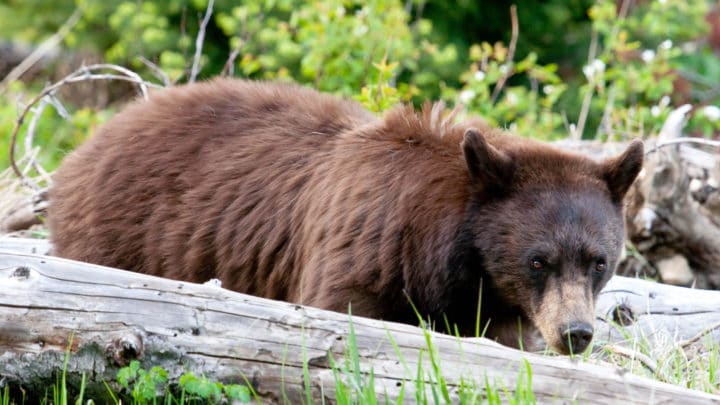
Observing Bear Behavior
The fact that they are in a closed canopy plant community (inside the forests) they can be very difficult to simply see. To spot a bear at a safe distance and to be able to observe natural behavior takes some luck. However, we can increase our odds! We often drive or hike to overlooks which can view forest margins. By spending some time scanning the edges of the forests we can get “lucky” and observe some incredible bear behavior!
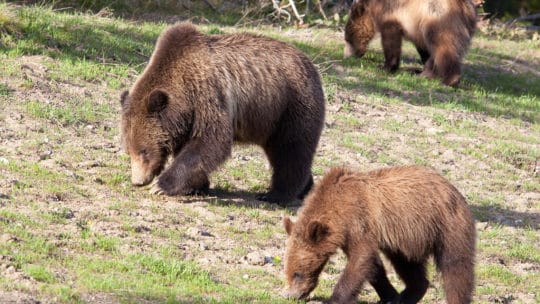
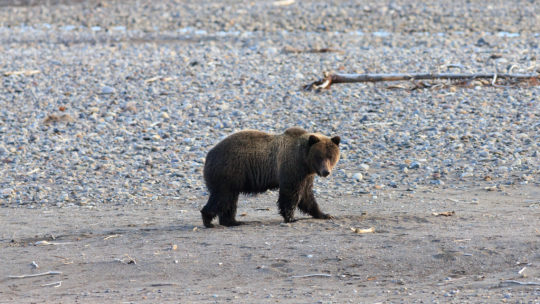
Foraging Bears
It is very impressive how dexterous a bear can be! Using lips, teeth, tongue and paws, they can pluck individual berries from branches or strip them from branches in bunches. When feeding on white bark pine nuts, black bears often climb to the topmost branches of the white bark pine trees to get at the cones (which are situated on the outermost tips of the branches)! The contortions they go through are amazing! Bending treetops, flexing branches, extended reaches of clawed paws, legs wrapped around spindly trunks; they pluck cones and either drop them to the ground or eat in the tree. The contortions and dexterity are super fun to watch! Sometimes they chew, or break, the branch off and drop it to the ground.
This type of behavior is not always visible on and annual basis.
First: there must be white bark cones. Cones (and berries) are not abundant every year and it does not help that many white bark pine trees are now dead. (This is a separate subject, but understand that white bark pine trees are in trouble due to a variety of factors. This is a major loss of food for all bears.)
Second: you have to be looking in the right place at the right time and have a bear foraging for this food. However, when it works, it can be one of the greatest wildlife sightings of a person’s life!
To spot a bear at a safe distance and to be able to observe natural behavior takes some luck. In summer, all herbivores are spreading out over larger landscapes to maximize their opportunity to find the most nutritious vegetation. Considering that bears are true omnivores, they too may spread out to find the most nutritious plant materials.
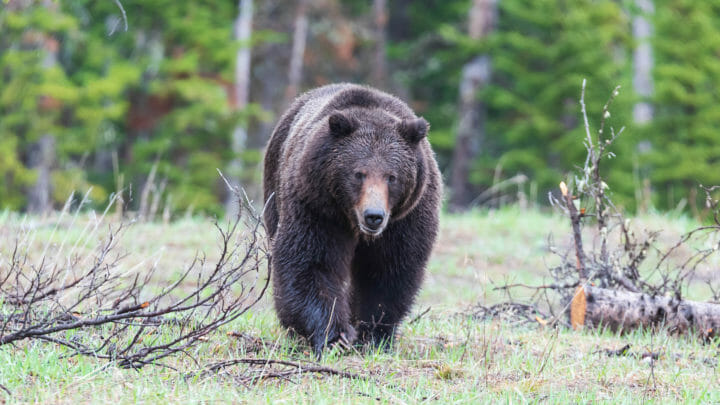
One final consideration: carcasses. If wolves make a kill, bears will smell these carcasses and travel long distances to find them. Likewise, the bison rut often results in mortal injuries to some of the male combatants. When these guys die they will also attract bears. Carcasses may take patience as well, but they can be great sites to observe bears. Just make sure you have good optics! You don’t want to be too close!

